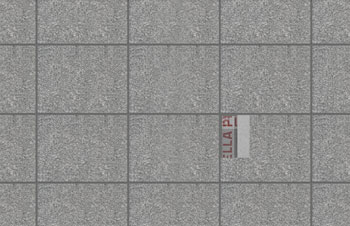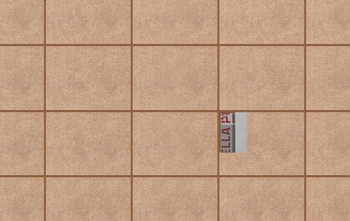Decorative / Mosaic structural plasters have been very popular for years. They have a high resistance to weather conditions, are easy to care for and clean.
They are commonly used as finishing bases around buildings and wherever damage-resistant and decorative plaster surface is expected.
The variety of structures, colours and grain sizes offered by manufacturers available on the market – results in that decorative / mosaic plasters are used as a perfect imitation of stone façades, especially sandstone and granite.
A traditional façade made of stone slabs is made using a heavy dry method where with a fastening system (metal anchors, guides etc.) natural stone slabs are placed on the façade insulated with mineral wool – it is most of all very expensive and requires special technical measures to maintain many tens of stone slabs and ensure special safety both during assembly and, of course, during use.
The alternative here is the indisputable use of the light wet method, where the wet element is the decorative plaster in the granite, sandstone or different stone version.
The results, which can be achieved, include a radical reduction of costs, acceleration of assembly work, a wide selection of the structure of many different stones, colours that without any compromise – as in the case of natural stone slabs – can be adapted to the whole building.
Contemporary decorative plasters imitate natural stone so well that their distinction requires an assessment from a very close distance and without touching the plaster surface with one’s hand, not everyone is able to distinguish between plaster and stone.
In addition, the use of decorative plasters, thanks to their technology – completely eliminates losses associated with cracking and scratches in stone slabs occurring in transport to the site, storage at the site and of course during assembly. It is estimated that these losses account for approx. 30% of purchased stone slabs, half of which are losses resulting from cutting the slabs to size. However, repairing damage to decorative plaster during use – for there are no other losses – is cheap, fast and without the need to order a new stone slab, where the chance of obtaining the same stone shade is very small.
„Stone” slabs made from decorative / mosaic plaster.
In order to divide the surface of the façade into rectangles imitating natural stone slabs – the necessary material is PVC groove beads and PVC cross connectors to connect them at right angles. In case of selecting this solution, use PVC groove beads BP11 H1, BP11 H1S, i.e. the deep strip/bead with internal groove dimensions of 10mm / 10mm with a dedicated cross connector BP11 H1 CC or bead BP11 MINI MAX S, i.e. a strip/bead with dimensions of 7mm width and 3mm depth with a dedicated cross connector BP11 MINI MAX CC.
Both above groove beads with cross connectors make up a typical joint (space) that occurs when installing natural stone slabs.
Groove beads and cross connectors should be painted with façade paints (silicone, acrylic or silicate), usually black or in the case of light colours (beige, sandstone) in dark grey or dark-beige colour. This will ensure a far-reaching resemblance to the appearance of a joint occurring with natural stone slabs.

Mosaic granite plaster – a BP11 MINI MAX CC cross connector was used

Mosaic sandstone plaster – a BP11 MINI MAX CC cross connection was used
ATTENTION: BP11 MINI MAX groove beads and BP11 MINI MAX CC cross connector should be painted with façade paints (acrylic, silicone, silicate). If using the GRANITE mosaic plaster, it is recommended to use dark grey or, alternatively, white – whereas – in the case of white colour, the bead and the cross connector must be painted white as the groove bead and the connector may differ in shade, and in the case of SANDSTONE plaster, a good effect is obtained by painting the bead and the cross connector to a dark beige colour.
Painting the BP11 MINI MAX groove bead and the BP11 MINI MAX CC cross connector is best done after gluing but before plastering.
After the glue for embedding the glass mesh has dried, remove the grey protective foam inside the groove bead and paint the bead and the connector.
Then, after the paint has dried, place the protective foam back inside the BP11 MINI MAX groove bead and in the connector, after which you can start plastering without worrying that the mosaic plaster will stain the inside of the bead and the connector.
The protective foam should be removed – most preferably – immediately after finishing the plastering.
The same applies to the BP11 H1 and BP11 H1 S groove beads and the BP11 H1 CC cross connector.




